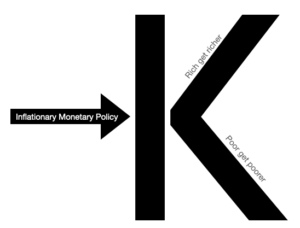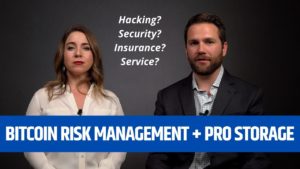
*** This is Part 2 of a series about the dangers of letting an administrator act as custodian. Make sure you read Part 1 first to make sense of this post. ***
Signs that your custodian may not really be a custodian
- They sometimes call themselves an administrator. “Administrator” is an accurate label for any company who provides record keeping services. Being an “administrator” doesn’t require any regulation. These types of companies may expand their services to include asset custody without actually registering as a bank or trust company.
- Their name contains the word “trust” attached to other letters or words. A legitimate custodian usually has the word “bank” or “trust” as a separate word included in its name. In most states, the word “trust” is a restricted word for naming companies – just like the word “bank”. This means that you can’t start a company called “ABC Bank” unless it’s registered as a bank. You also can’t start a company called “XYZ Trust Company” without being a registered trust company. An illegitimate custodian might get around this by calling themselves Trustus rather than Trust Us, Dotrust rather than Do Trust, or Safetrust rather than Safe Trust. You see, if trust is attached to another word instead of used as a separate word, then it sneakily gets around the naming restrictions.
- They have dozens of offices all around the country. Expanding to dozens of cities across the country can get expensive for a regulated custodian. The self-directed IRA custodian business isn’t nearly as profitable as the securities business, and most legitimate custodians must operate only one or two offices in order to be able offer their services for reasonable and competitive fees.
- They sell franchises. Franchises can be a powerful and leveraged way to build a brand, but for the IRA custodian business it is nearly impossible to expand a legitimate custodian business through franchising. If a legitimate custodian had 40 offices across the country, its overhead would be so high that its fees would be much higher than the next most expensive competitor and its services would have nothing to offer to justify the higher fees. In reality, it appears that only illegitimate custodians are able to run franchise operations, and this is made possible by not having to deal with the regulatory costs of having dozens of audited and regulated offices.
- They hire a real bank or trust company to be the custodian, but then they fulfill custodial duties themselves. In the legal world, there is a concept known as “stepped transactions” or the use of a “strawperson”. This is basically where a step is added to a transaction to include a person or company, and this inclusion is only involved to circumvent a law. For instance a self-directed IRA can’t buy or sell assets to or from its accountholder or its family members. So let’s imagine a guy named Joe wants to sell his personal residence to his IRA – which would normally be a prohibited transaction. In an attempt to get around this prohibition, he sells his home to his friend Randy, who then sells the house to Joe’s IRA. This would easily be deemed a “stepped transaction” because Randy did not really want to buy the house; he was just trying to disconnect the real parties from transacting (Joe and his IRA) directly so that it would appear to not break any laws. This same concept can be seen with IRA custodians. An administrator may want to serve as a custodian without being a bank or trust company. So it hires a bank to serve as custodian on the paperwork. Then it gets the bank to outsource custody-related tasks (holding and controlling assets) right back to it. In this scenario, the bank is a “strawperson” and the arrangement is similar to a “stepped transaction”. To understand the legal ramification of what’s really going on, you must remove the step/strawperson. In this scenario, what’s really happening is that a non-custodian is serving as the custodian, and it is illegitimate.
- They are opposed to the “checkbook control” IRA LLC strategy. Illegitimate custodians primarily profit by earning interest on the funds of others (like a bank) without registering themselves as a bank or trust company. In an IRA LLC structure, most of the IRA funds are invested into an LLC where the IRA/LLC accountholder puts them at any bank of their choosing – where the LLC will earn the interest on the funds. This undermines the primary goal for the illegitimate custodian (earning interest on your funds) so it usually discourages (or even disallows) you to use the IRA LLC strategy.
![]()
Coming up in Part 3 of this series: How to tell if your custodian is compliant using the illegitimate custodian test.
![]()

![]()
![]() Subscribe ::
Subscribe ::  del.icio.us ::
del.icio.us ::  Digg this ::
Digg this ::  Stumble it ::
Stumble it ::  facebook
facebook
 ::
::  ::
::  ::
::  ::
::  ::
::  ::
::  ::
::  :: [What are these icons for?]
:: [What are these icons for?]


